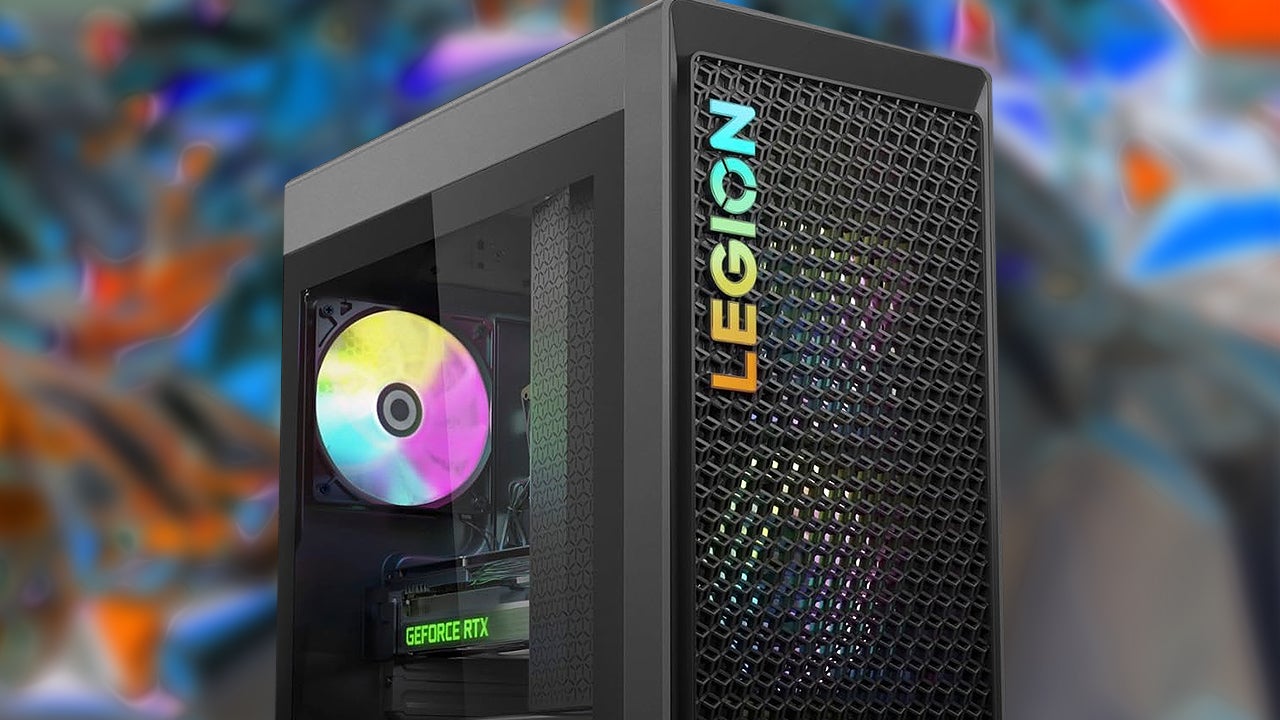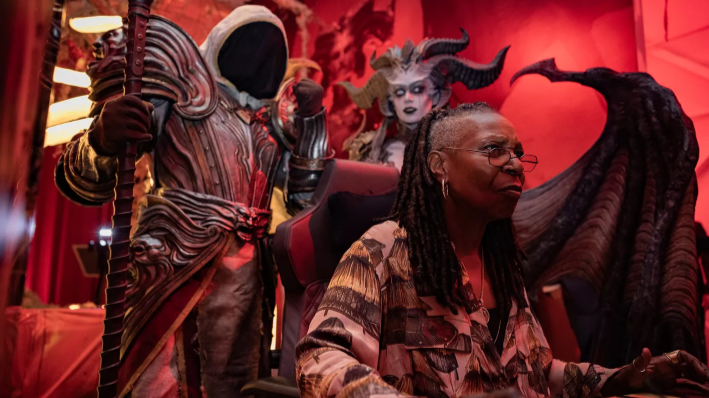The problem with 2021’s Turnip Boy Commits Tax Evasion was definitely not its name. In fact, I’d argue it has one of the greatest game titles ever, but its absurd sense of humor and cutesy style could only carry its repetitive three-hour campaign so far. Its 2024 sequel, Turnip Boy Robs a Bank, may not have as memorable of a name, but it’s somehow even more ridiculous than its predecessor. See, in order to rob the bank, Turnip Boy gets a gun! A lot of guns in fact! And he’s ready to mow down so many cops and monsters on his way to riches, acceptance, and something far more mysterious. This follow-up may not be much longer, but some much-needed quality of life improvements and cleaned up combat make its more fast-paced action and roguelite structure are a clear improvement over the original.
Turnip Boy Robs a Bank begins not long after the events of the first game, where we learned that our lovable, cherubic protagonist actually came from mafia blood, with his dad being the infamous mob boss Don Turnipchino. A couple of these details from Commits Tax Evasion are important for understanding some of the character dynamics in Robs a Bank, but it also doesn’t really matter at all, especially since the original’s secret final boss, the God Onion, is more key to the story here. The developers at Snoozy Kazoo excel at playing with your expectations, so not only did Turnip Boy rip up a bunch of documents, stand up to Mayor Onion, and embrace his mafia heritage at the end of the first game, but defeating the God Onion also started a war so devastating and apocalyptic that the world feels like it’s about to end. Worst of all, it’s only been two days!
Even though most of Robs a Bank takes place inside, you know, a bank, the war (as it is often emphasized in text boxes) hangs over everything. It creates fun opportunities to bring back my favorite characters from the first game in different situations and with slightly tweaked personalities – like shallow influencer SlayQueen32 or Old Man Lemon. It also does an excellent job of setting expectations, both for people who’ve played a Turnip Boy game before and those who are new. Yes, Robs a Bank is still going to be ridiculous like its predecessor, but it’s going to be darker and grittier, too. There are no bright colors and pastoral villages here when you have so much violence to do.
Did you hear? Turnip Boy has a gun now
The big mechanical difference between the two Turnip Boy games is that the first was a dungeon crawler with light combat and puzzle solving, while the second is a roguelite that’s essentially all combat. One of the first items Turnip Boy is handed is a gun, and not long after that, you get into a truck, ram into a bank, and start killing. Your goal is to collect as much money as possible as you seek the larger cache hidden inside the bank. Unfortunately, there’s a time limit for how long you can spend inside – after three minutes (though you can increase this to six through upgrades), the bank will be overrun by cops that’ll make it more difficult to escape. If you decide to take your time and fight past that timer, the bank owner, Stinky, will unleash gas that’ll eventually kill you. That puts a good level of pressure on you to gather as many resources as you can and get out fast. You’ll then arrive back at your base of operations, where you can recycle guns you pick up from enemies, spend money on the dark web to get items for quests, and put money into performance enhancers (their words, not mine) to upgrade your stats.
Robs a Bank is a vastly different experience than Commits Tax Evasion, but that isn’t to say it’s completely unrecognizable. Sure, it’s almost entirely switched genres, but Turnip Boy is still the same silent hero with a permanent grin. He’s still bombarded with constant nonsense from the world and people around him, and he still hilariously won’t react to any of it. If someone wants his help with something he’ll just do it, even if it’s as random as delivering a love letter to a vampire or shaking down a bean in a suit to get a graphics card. You’ll be minding your own business trying to clear a room only to see the most inane internet pop culture reference (there are quite a few bitcoin jokes here, for instance), and that sense of humor works just as well here as it did the first time around.
Best of all, you’ll still be tasked with fulfilling long-winded, optional errands for NPCs – things like finding rings to help two berries to get engaged. These extended side missions were in the first one too, but it was tough to keep track of them since there wasn’t a quest log. Thankfully, you now have a task list in your menu to do just that, excitingly addressing one of Commits Tax Evasion’s biggest letdowns. It’s still not a perfect system since there’s no way to record where quest givers are located, and it’s easy to forget where they are since it can sometimes take hours to get the item they’ve asked for, but it’s a welcome addition nonetheless.
Granted, these are still optional, and you’ll only get an achievement and maybe a hat for completing them, but the hats especially are worth working for. They’re cute and mostly predictable – if you help out a guy with a rat-related question, you’ll get a hat that makes you look like a rat – but a couple of them are scene stealers. There’s one that lets you walk around like a Doug Dimmadome meme, and I kept it on for most of the time I had it, only changing into a fedora so I could wield a revolver like a true crime boss.
There are some additional sidequest types this time around, too. If you collect the souls of your enemies for a DJ, you can unlock a myriad of truly excellent upbeat music tracks and control which ones play as you slice through areas. You can also take selfies in various parts of the bank to bring back to Annie the avocado, who is once again trying to unravel the history of the world. There’s a lot more lore to uncover throughout, and by the end of the story, you’ll have a very good idea of how we as humans messed everything up.
Robs a Bank is very overt about its politics, and you’ll come away knowing exactly how the developers see the world – from how they feel about NFTs, to the big Unity controversy from last year. That candor makes the jokes feel more personal, but it’s also just fun as it always managed to surprise me. Even when a section could become frustrating or repetitive, you’re pushed along just to see what it will do next.
…And he kills people with that gun
Frankly, I was worried about how Turnip Boy Robs a Bank would translate into a combat-centric roguelite, especially when action was one of the weaker parts of the first one. That wasn’t as big of a deal then because the focus was on puzzles and using your environment to succeed in particularly tough fights. The bones from the first game, which include forcing Turnip Boy to “trip” to dodge, are still here, but the weapon accuracy is much better. It’s still a bit floaty, and sometimes I felt like I was spamming the trip key to align myself correctly with enemies, but it’s a huge improvement. Plus, there are two difficulty settings (and some accessibility toggles, like God Mode) that can help you get through a particularly tough spot.
Weapon accuracy doesn’t always matter, either, depending on which weapons you like to use. As you gather more weapons and bring them back to headquarters to recycle, you’ll unlock the basic guns you’ve seen in most games, like a pistol, assault rifle, or grenade launcher. But as you fight through the bank and unlock more areas, enemies will drop a seemingly endless array of weapons. Some just cause elemental damage, but you can also find a weapon that unleashes firecrackers, a flower-shaped weed wacker that tears through enemies like a chainsaw, and the largest sword you’ve ever seen.
It helps to try and coordinate which weapons you use with what kinds of enemies you expect to encounter. You can plan out a run ahead of time to some extent, like if you know you’re going to fight through a certain area with consistent enemies, such as one where all the veggies from the first game live underground or another filled with toxic mutants and goblins. But as with any roguelike or lite, there is still a degree of randomness. Here, the bank elevator will open up on a random floor during each run. This is due to a bank safety protocol, obviously, and the guy who runs the elevator isn’t happy about it either. It’s another way that Robs a Bank uses its built-in absurdity to make sense of its world, but it can make runs slightly frustrating, since you could want to finish a sidequest but not get let out on the floor you need in order to do that for a long time.
Along with these different areas, there are four bosses you have to defeat before you can confront the final one. Commits Tax Evasion had a big issue with its bosses, which were exponentially tougher than its normal enemies and created unexpected and frustrating difficulty spikes. Oddly, Robs a Bank has the opposite problem, in that the first boss is the most difficult and the last of the initial four is the easiest. I can chalk this up to taking my time to get comfortable with the combat while finding a strategy that worked for me, but it does also feel like a bit of a pacing issue, especially when you get to the final confrontation. That last fight is a slog, forcing you to go back over things you’ve already done and rushing you to a big reveal you then have no time to sit with.
This is just one symptom of the larger pacing problems with the Turnip Boy series, which is strange considering both games are only a few hours long. Robs a Bank at least has a greater sense of discovery, so you’re always finding secrets, having conversations, and completing silly quests for stupid hats. It’s been expanded, so the joy lasts longer as a result – but a lot of the charm runs out by the end, which is a shame when it only took me about three or four hours to unlock every upgrade.






